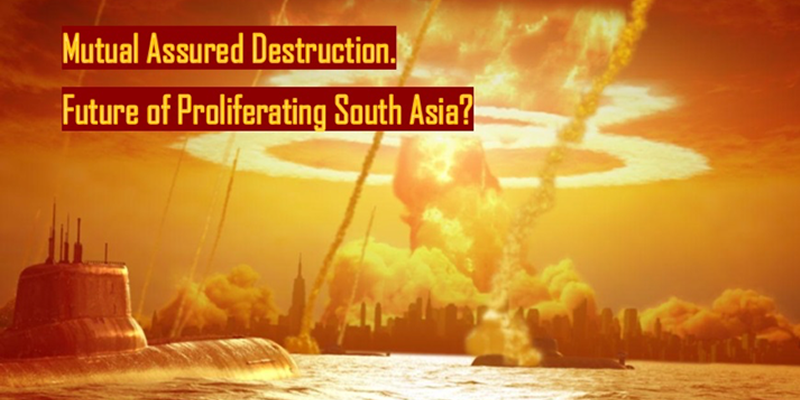South Asian strategic environment is shaped by power struggle between India & Pakistan in lieu of People’s Republic of China. For Islamabad, Nuclear weapons are key aspect of attaining strategic stability against New Delhi. India’s quantitative edge in conventional forces is counter balanced by Pakistan’s qualitative approach related to development of Tactical Nuclear Weapons. Both states, under the pressure of achieving upper hand in South Asian strategic environment are engaged in conventional as well as nuclear arms race one way or another. Nuclear arms race in South Asia involves the proliferation of nuclear weapons as well as advancement in their delivery systems. Though India is extensively working on development of Ballistic Missile Shield comprising of indigenous as well as off the shelf purchases of missile defense systems, but due to geo graphic constraints & several other factors, BMDs still counts little in South Asian strategic environment particularity after development of long range stand-off munitions as well as multiple independent targeted re-entry vehicle (MIRV) by Pakistan. Continuous nuclear proliferation in South Asia raises a credible question, are both India & Pakistan heading towards the situation of Mutual Assured Destruction (MAD)?
MAD is not a new term in strategic studies as it was extensively discussed during Cold war era. Since pretty much nuclear parity still exists between United States & Russia, thus this term is still valid & may find another axis i.e. South Asia, other than classical Washington vs Moscow example. A glimpse at modernizing plans of India and Pakistan points out that these states are also heading towards the same path which was once followed by Soviet Union and United States.
Mutual Assured Destruction can be defined as the condition in which both rival nuclear armed states have capability to conduct massive first as well as second nuclear strike leading to destruction of both states on massive scale. It’s like ‘’reversible’’ massive retaliation. Just like Massive Retaliation, MAD also involves striking counter force in addition to counter value targets of adversary. Even today, despite of superiority of United States in conventional grounds, pretty much parity exist in nuclear forces between USA & Russia. Hence condition of MAD is still alive. USA is conducting extensive Research & Development related to development & integration of credible Missile Defense Shield. This shield, consisting of multilayer defense interception systems, ground based radars & passive sensors, satellites, early warning systems integrated with each other and run by advance command & control systems, in near future will be able to dissolve the risk of MAD at least from American perspective. Russians have responded in similar fashion but their technology is not as advance, integrated & comprehensive as that of Americans. Thus, Moscow still follows the path of MIRV based ICBMs and Non-Strategic Nuclear Weapons (NSNW) with hostile doctrinal posture. Along-side, it has focused to achieve advancement related to SEAD (Suppressing Enemy Air Defense) and DEAD (Destroying Enemy Air Defense). These measures & counter measures justify the security dilemma which still exist between both arch rivals to this day, with MAD at focal point.




